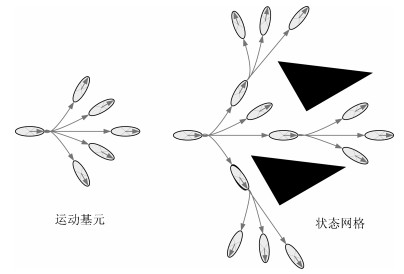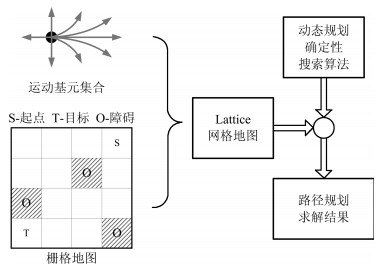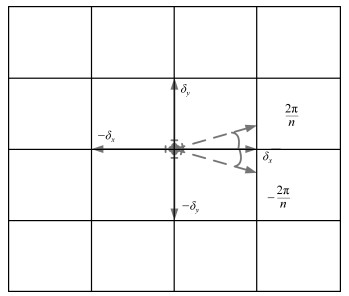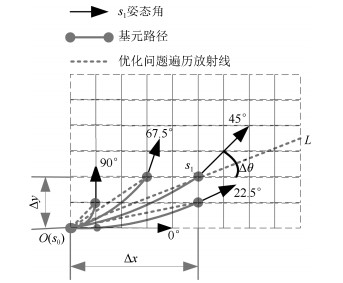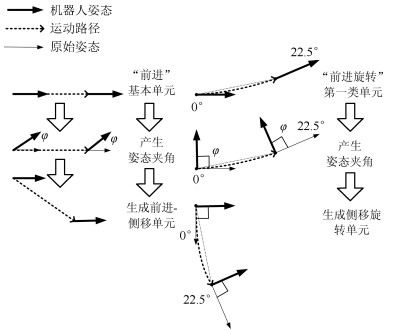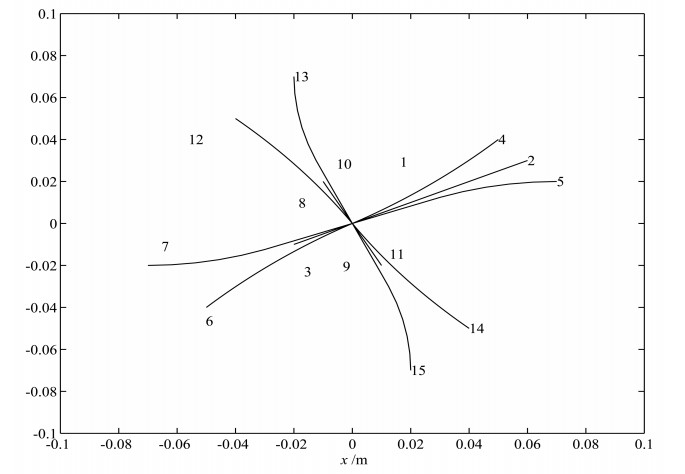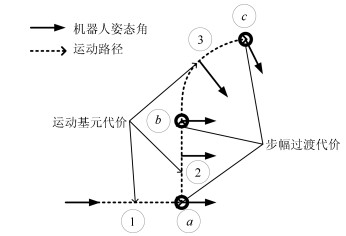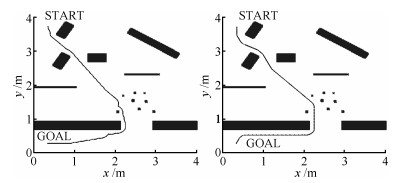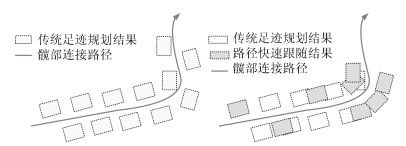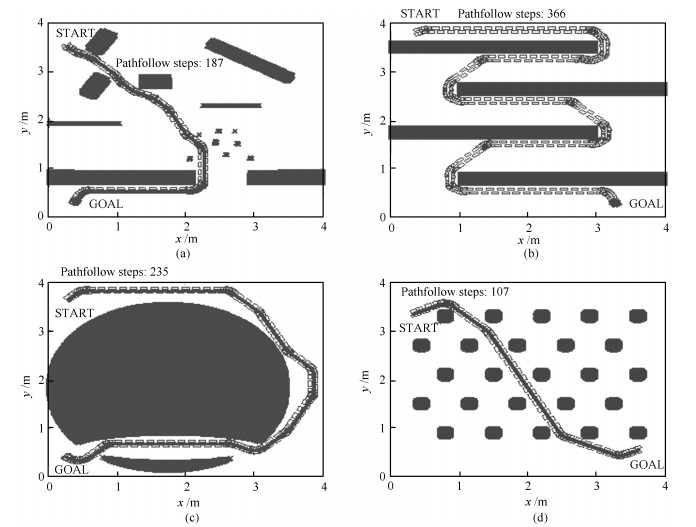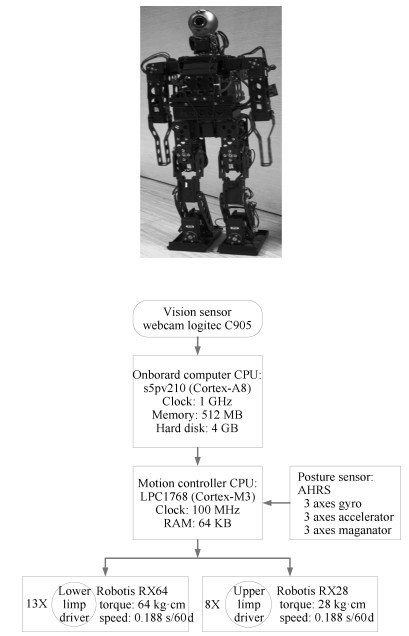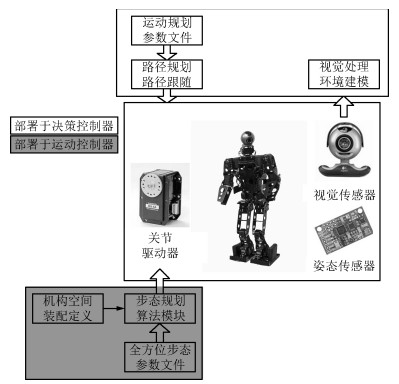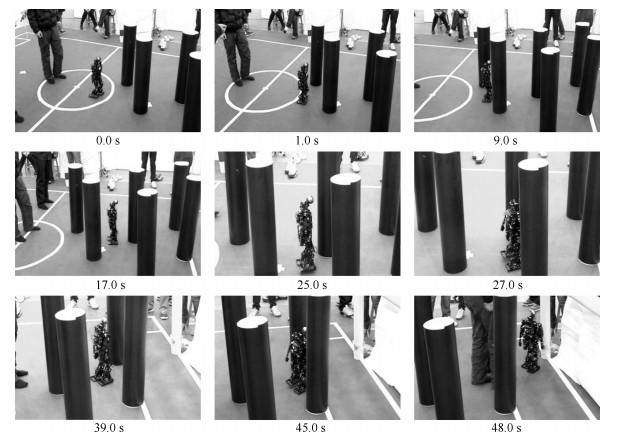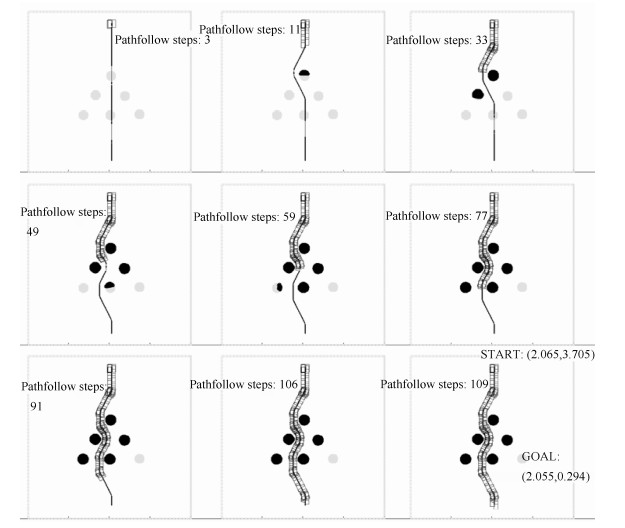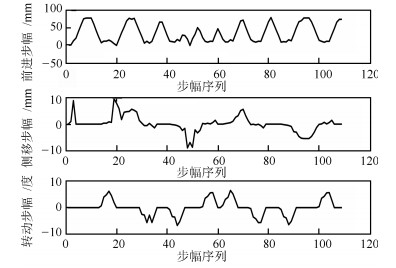|
[1]
|
Spong M W, Hutchinson S, Vidyasagar M. Robot Modeling and Control. Hoboken, NJ, USA:John Wiley and Sons, 2006.
|
|
[2]
|
Latombe J C. Robot Motion Planning. Berlin, Germany:Springer, 1991.
|
|
[3]
|
Choset H, Lynch K M, Hutchinson S, Kantor G A, Burgard W, Kavraki L E, Thrun S. Principles of Robot Motion:Theory, Algorithms, and Implementations. Cambridge, UK:A Bradford Book, 2005.
|
|
[4]
|
Lavalle S M. Planning Algorithms. Cambridge, USA:Cambridge University Press, 2006.
|
|
[5]
|
Xia Z Y, Xiong J, Chen K. Global navigation for humanoid robots using sampling-based footstep planners. IEEE/ASME Transactions on Mechatronics, 2011, 16(4):716-723 doi: 10.1109/TMECH.2010.2051679
|
|
[6]
|
Hornung A, Maier D, Bennewitz M. Search-based footstep planning. In:Proceedings of the 2013 ICRA Workshop on Progress and Open Problems in Motion Planning and Navigation for Humanoids. Karlsruhe, Germany:IEEE, 2013.
|
|
[7]
|
Xia Z Y, Chen G D, Xiong J, Zhao Q F, Chen K. A random sampling-based approach to goal-directed footstep planning for humanoid robots. In:Proceedings of the 2009 IEEE/ASME International Conference on Advanced Intelligent Mechatronics. Singapore:IEEE, 2009. 168-173
|
|
[8]
|
Xia Z Y, Xiong J, Chen K. Parameter self-adaptation in biped navigation employing nonuniform randomized footstep planner. Robotica, 2010, 28(6):929-936 doi: 10.1017/S0263574709990804
|
|
[9]
|
Liu H, Sun Q, Zhang T W. Hierarchical RRT for humanoid robot footstep planning with multiple constraints in complex environments. In:Proceedings of the 2012 IEEE/RSJ International Conference on Intelligent Robots and Systems. Vilamoura:IEEE, 2012. 3187-3194
|
|
[10]
|
Huang W W, Kim J, Atkeson C G. Energy-based optimal step planning for humanoids. In:Proceedings of the 2013 IEEE International Conference on Robotics and Automation. Karlsruhe:IEEE, 2013. 3124-3129
|
|
[11]
|
Perrin N, Stasse O, Baudouin L, Lamiraux F, Yoshida E. Fast humanoid robot collision-free footstep planning using swept volume approximations. IEEE Transactions on Robotics, 2012, 28(2):427-439 doi: 10.1109/TRO.2011.2172152
|
|
[12]
|
Maier D, Lutz C, Bennewitz M. Integrated perception, mapping, and footstep planning for humanoid navigation among 3D obstacles. In:Proceedings of the 2013 IEEE/RSJ International Conference on Intelligent Robots and Systems (IROS). Tokyo:IEEE, 2013. 2658-2664
|
|
[13]
|
张继文, 刘莉, 李昌硕, 陈恳.仿人机器人参数化全方位步态规划方法.机器人, 2014, 36(2):210-217 http://www.cnki.com.cn/Article/CJFDTOTAL-JQRR201402011.htmZhang Ji-Wen, Liu Li, Li Chang-Shuo, Chen Ken. Parametric Omni-directional gait planning of humanoid Robots. Robot, 2014, 36(2):210-217 http://www.cnki.com.cn/Article/CJFDTOTAL-JQRR201402011.htm
|
|
[14]
|
Yoshida E, Esteves C, Belousov I, Laumond J P, Sakaguchi T, Yokoi K. Planning 3-D collision-free dynamic robotic motion through iterative reshaping. IEEE Transactions on Robotics, 2008, 24(5):1186-1198 doi: 10.1109/TRO.2008.2002312
|
|
[15]
|
Hornung A, Bennewitz M. Adaptive level-of-detail planning for efficient humanoid navigation. In:Proceedings of the 2012 IEEE International Conference on Robotics and Automation. Saint Paul:IEEE, 2012. 997-1002
|
|
[16]
|
Sprunk C, Lau B, Pfaffz P, Burgard W. Online generation of kinodynamic trajectories for non-circular omnidirectional robots. In:Proceedings of the 2011 IEEE International Conference on Robotics and Automation. Shanghai, China:IEEE, 2011. 72-77
|
|
[17]
|
Pivtoraiko M, Knepper R A, Kelly A. Differentially constrained mobile robot motion planning in state lattices. Journal of Field Robotics, 2009, 26(3):308-333 doi: 10.1002/rob.v26:3
|
|
[18]
|
Likhachev M, Ferguson D. Planning long dynamically feasible maneuvers for autonomous vehicles. The International Journal of Robotics Research, 2009, 28(8):933-945 doi: 10.1177/0278364909340445
|
|
[19]
|
张浩杰, 龚建伟, 姜岩, 熊光明, 陈慧岩.基于变维度状态空间的增量启发式路径规划方法研究.自动化学报, 2013, 39(10):1602-1610 doi: 10.3724/SP.J.1004.2013.01602Zhang Hao-Jie, Gong Jian-Wei, Jiang Yan, Xiong Guang-Min, Chen Hui-Yan. Research on incremental heuristic path planner with variable dimensional state space. Acta Automatica Sinica, 2013, 39(10):1602-1610 doi: 10.3724/SP.J.1004.2013.01602
|
|
[20]
|
Bertsekas D P. Dynamic Programming and Optimal Control (Third edition). Belmont, Mass:Athena Scientific, 2005.
|
|
[21]
|
Kavraki L E, Svestka P, Latombe J C, Overmars M H. Probabilistic roadmaps for path planning in high-dimensional configuration spaces. IEEE Transactions on Robotics and Automation, 1996, 12(4):566-580 doi: 10.1109/70.508439
|
|
[22]
|
Lavalle S M. Randomized kinodynamic planning. The International Journal of Robotics Research, 2001, 20(5):378-400 doi: 10.1177/02783640122067453
|
|
[23]
|
Likhachev M, Gordon G J, Thrun S. ARA*:anytime A* with provable bounds on sub-optimality. In:Advances in Neural Information Processing Systems. Massachusetts:MIT Press, 2003. 767-774
|
|
[24]
|
Likhachev M, Ferguson D, Gordon G, Stentz A, Thrun S. Anytime search in dynamic graphs. Artificial Intelligence, 2008, 172(14):1613-1643 doi: 10.1016/j.artint.2007.11.009
|
|
[25]
|
Likhachev M. Sbpl ROS wiki[Online], available:http://wiki.ros.org/sbpl, June 30, 2015.
|




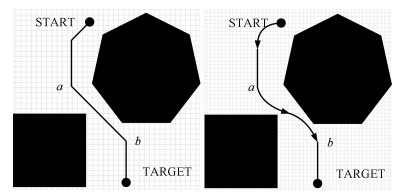
 下载:
下载:
